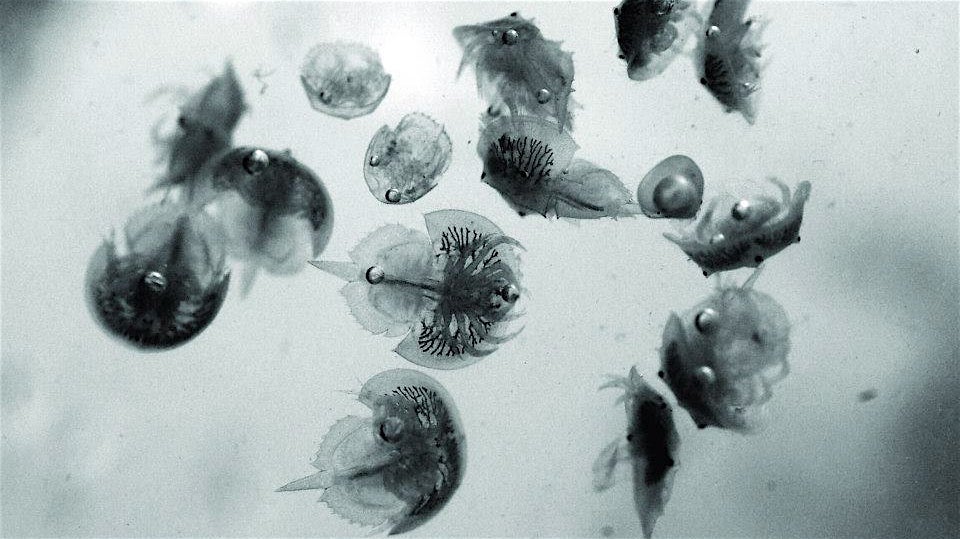Report: Horseshoe crab hatchlings settle near Cape May, with help from Rutgers

Researchers allowed eggs to hatch in the lab, then planted the tiny crabs along the mud of the Cape May Canal. / Photo via The Wetlands Institute, on Facebook
A quarter-million new residents are quietly burrowing into their winter homes along the Cape May Canal, though it’s unclear yet how many of them will survive.
The Press of Atlantic City reports on a Rutgers University program through which 250,000 tiny hatchling horseshoe crabs were planted in the mud along the Cape May Canal. It’s part of an effort by the university’s Aquaculture Innovation Lab to increase the overall horseshoe crab population, writes Sarah Watson:
The hatchlings, about half the size of a pinkie fingernail, were part of an ongoing experiment at Rutgers University’s Aquaculture Innovation Center in Lower Township designed to better understand how to increase the crab population in the Delaware Bay.
The idea is simple: collect wild eggs and let those eggs hatch in the safety of a tank, away from predators or extreme weather. The goal also is to better understand the life cycle of an ecologically critical and commercially important species at the center of intense political debate.
“What we’re trying here with the release is to get them through that first three- to four-month period, when predation is extremely high and mortality is extremely high,” said Michael De Luca, director of the Aquaculture Innovation Center.
It’s hard to overestimate the value of those odd-looking creatures, as I wrote a few years back in the Inquirer:
Aesthetically, they’re not about to win any beauty pageants, with nine eyes, a helmet-shaped carapace, and that scary swordlike tail. But they’re a vital part of the life of the red knot, an at-risk shorebird species that makes an annual migratory pit stop along the Delaware Bay to feast on horseshoe crab eggs.
They’re important in medicine, as well, as their blood contains a clotting agent that provides a rapid, reliable test to detect infectious bacteria in drugs and some medical prosthetic devices.
– See more at: http://articles.philly.com/2011-05-30/news/29599145_1_horseshoe-crabs-species-pickup-truck#sthash.ybyosR7f.dpuf
According to the Press story, the team had students from the Cape May Technical School help them release some of the hatchlings, giving students a firsthand view of science at work in their community. Another way the Rutgers effort is planting seeds for the future.
WHYY is your source for fact-based, in-depth journalism and information. As a nonprofit organization, we rely on financial support from readers like you. Please give today.


